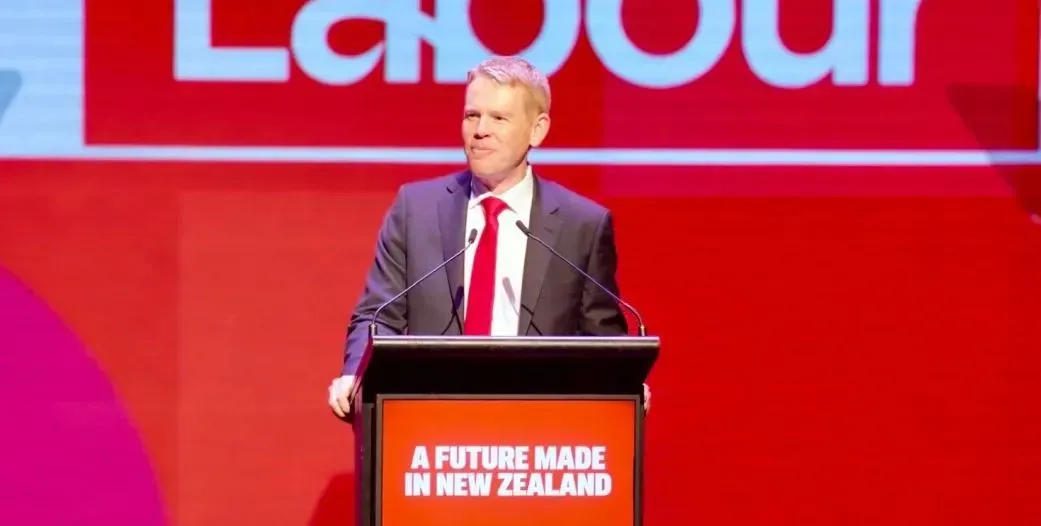Intransigent Policies
In April 2018, the New Zealand Government announced that it would no longer issue new offshore oil and gas exploration permits in order to “transition toward a low-carbon economy and reduce greenhouse gas emissions”.
I have just finished reading the Greens’ 2023 election policies which affirm a continued ban on oil and gas exploration in Taranaki.
According to a report by NZIER, commissioned by PEPANZ, this ban will reduce real GDP in the Taranaki region by an average of NZ$6.8 billion and cost 5,500 jobs by 20501,2.
POWER: At that time, “8 Rivers Networks LLC”, an American technology company with a focus on innovation in various industries, including environmental solutions, was looking to establish a presence in the region. The company is renowned for developing advanced technologies like the ‘Allam Cycle’. This technology gained attention for its potential to significantly reduce greenhouse gas emissions from natural gas power plants. 8 Rivers had plans to build a ‘NET Power’ plant in Taranaki. Keep this in mind.
Natural gas can not only be used to generate power but also to make hydrogen and fertiliser.
HYDROGEN: Many times, we have heard how excellent it would be to transition to a hydrogen economy. The government has committed to developing a ‘Hydrogen Roadmap’ as part of the ‘Emissions Reduction Plan in 20223.
- The government is seeking feedback. The consultation is open for submissions until 2 November 2023, 5pm!
Natural gas can be used to make hydrogen. The process of forcing superheated steam through natural gas is called steam methane reforming (SMR), and it is the dominant commercial technology for producing hydrogen from fossil fuels. Approximately 48% of the world’s hydrogen production occurs in this way4. With the Maui gas fields nearby, it would have been wise of the government to consider this opportunity before imposing bans.
FERTILISER: In 2014 Russia invaded the Crimea and as a result various bans were placed on Russian exports: punitive measures to convince the Russians to desist from their aggression. Fertiliser was not included in the bans as Russia is a major exporter of fertiliser and it would have hurt countries that are reliant on fertiliser. New Zealand is one of those countries. According to the Fertiliser Association of New Zealand5, NZ consumed about 1.6 million tonnes of nitrogen and 0.9 million tonnes of phosphate in 20206. The imbalance between NZ’s ability to produce fertiliser and its requirements is highlighted by these facts:
- The value of NZ fertiliser exports in 20227 was US$4.24 million,
which is negligible compared to:
- the value of fertiliser imports in 20208 was US$1.03 billion
Making fertiliser from natural gas is commonplace. New Zealand already has a fertiliser manufacturing facility in Taranaki, owned by Ballance Agri-Nutrients9. This plant produces urea from natural gas sourced from the nearby Maui gas field10. Urea is the most widely used nitrogen fertiliser in New Zealand and is also used in some manufacturing processes11. Some urea is also imported. The plant has a capacity of about 260,000 tonnes per year12 which is about 16% of the total nitrogen consumption in NZ13. A suitable plant in Taranaki could have made NZ fertiliser independent, and possibly a net exporter; this was suggested at the time of the ‘Net Power’ proposal. But ‘fertiliser bad’ since New Zealand committed to meet its emission reduction targets under the Paris Agreement and the Climate Change Response Act 200214.
As an aside, and urea serves as a straightforward example, it’s worth noting that NZ company Ravensdown operates as a cooperative for farmers, offering favourable fertiliser pricing. The fertiliser’s cost per tonne is $805 NZD (excluding GST, freight, and handling charges)15. As such, prudent farmers typically use only the necessary amount of fertiliser, and government interventions are rarely helpful in this area, climate change or not.
So far we can see that the decision to stop oil and gas development is questionable, affecting power generation, hydrogen, and fertiliser manufacturing. But it is a decision the intransigent Greens and Labour cling to. What would it take for them to see sense?
POLLUTION: Brown coal emits approximately 1.32 tonnes of CO2 per megawatt-hour (MWh) of electricity, compared to 0.94 tonnes for black coal and 0.51 tonnes for gas16. This means that switching from brown coal to gas could reduce the emissions intensity of electricity generation by more than half.
New Zealand needs Huntly Power Station to generate electricity to avoid shortfalls in supply. Huntly Power Station is the largest thermal power station in New Zealand17. It has five operational generating units that can use either natural gas or coal as fuel sources.
The point here is not exclusively that we should feed Huntly on gas – though that could be considered; but that we already had a build offer for a locally fuelled gas power station in 2018, to be in Taranaki, but the ‘NET Power’ proposal was rejected. A decision driven as much by the perspective that fossil fuels are harmful as a political agenda – particularly by the Greens. The decision-making processes behind this whole fiasco are eerily reminiscent of Stalinist statism.
Five years later, looking at the objective of ‘a transition toward a low-carbon economy and reducing greenhouse gas emissions’, how is this working out?
In 2020, despite the government declaring a ‘climate emergency’ and displaying their distaste for fossil fuels, imports of particularly low-quality coal from Indonesia surged to over a million tonnes for the first time since 2006, totalling 1.084 million tonnes. How much CO2 would that produce, compared to a typical gas-fuelled power station, for the same amount of electricity?
Burning 1.084 million tonnes of Indonesian brown coal produces approximately 1.01 million tonnes more CO2 compared to burning a comparable amount of natural gas to generate the same amount of electricity. To put this into perspective, if we estimate the average car emits around 4.6 metric tons of carbon dioxide per year18, the difference in CO2 emissions is equivalent to the emissions from approximately 220 million cars in a year!
For context within the framing of climate change, this is roughly equivalent to the emissions generated by approximately 913,000 of the round-trip flight from New Zealand to Edinburgh19 by Mr James Shaw for COP26.
…And let’s remember that the ‘Net Power’s’ Allam’s Cycle system would actually have pumped any CO2 back into the ground…and, as such, would have been ‘net zero’ CO2. I shan’t work that one out as the whole issue becomes ridiculous!
What can we do when parties refuse to learn from their failed policies? Share our learnings and knowledge with others – and consequently (hopefully) deny Labour and the Greens votes – and help the economy and people of my birthplace – Taranaki.
References
- www.nzier.org.nz/hubfs/Public%20Publications/Client%20reports/nzier-economic-impact-of-ending-new-oil-and-gas-exploration-permits-outside-onshore-taranaki-february-2019.pdf.
- www.nzier.org.nz/publications/economic-impact-of-ending-new-oil-and-gas-exploration-permits-outside-onshore-taranaki.
- www.mbie.govt.nz/building-and-energy/energy-and-natural-resources/energy-strategies-for-new-zealand/hydrogen-in-new-zealand.
- https://en.wikipedia.org/wiki/Hydrogen_production.
- https://www.fertiliser.org.nz.
- https://www.fertiliser.org.nz/Site/resources/fact-sheets.aspx.
- https://tradingeconomics.com/new-zealand/exports/fertilizers.
- https://www.fertiliser.org.nz/Site/resources/fact-sheets.aspx.
- https://ballance.co.nz/Our-Business-and-History/Manufacturing.
- https://teara.govt.nz/en/photograph/15844/kapuni-urea-plant.
- https://teara.govt.nz/en/photograph/15844/kapuni-urea-plant.
- https://ballance.co.nz/Our-Business-and-History/Manufacturing.
- https://www.fertiliser.org.nz/Site/resources/fact-sheets.aspx.
- https://environment.govt.nz/facts-and-science/climate-change/agriculture-emissions-climate-change/
- https://www.ravensdown.co.nz/services/product-availability/price-list
- https://environmentvictoria.org.au/our-campaigns/safe-climate/problem-brown-coal/.
- https://en.wikipedia.org/wiki/Huntly_Power_Station.
- https://www.epa.gov/greenvehicles/greenhouse-gas-emissions-typical-passenger-vehicle.
- https://ourworldindata.org/travel-carbon-footprint.
Calculations
To compare the CO2 emissions from burning 1.084 million tonnes of Indonesian brown coal to an equivalent amount of natural gas for producing the same electricity, the following information was considered:
- The emission factor of Indonesian brown coal is 99,718 kg CO2 per GJ.
- The NCV of Indonesian brown coal is 19.8 GJ/t.
- The emission factor of natural gas is 53.06 kg CO2 per MJ.
- The LHV of natural gas is 36.4 MJ/m³.
To calculate the CO2 emissions:
To find the CO2 emissions from burning 1.084 million tonnes of Indonesian brown coal:
CO2 {coal} = (1.084 × 106 t) × (19.8 GJ/t) × (99,718 kg CO2/GJ) = 2.08 × 1012 kg
To find the comparable amount of natural gas needed:
Assuming equal efficiency (h) in converting thermal energy to electrical energy:
h × (1.084 × 106 t) × (19.8 GJ/t) = h × (V m³) × (36.4 MJ/m³)
Solving for V:
V = [(1.084 × 106 t) × (19.8 GJ/t)] / (36.4 MJ/m³) = 5.60 × 108 m³
Now, calculate the CO2 emissions from burning this amount of natural gas:
CO2 {gas} = (5.60 × 108 m³) × (36.4 MJ/m³) × (53.06 kg CO2/MJ) = 1.07 × 1012 kg
Now, find the difference in CO2 emissions:
CO2 {difference} = CO2 {coal} – CO2 {gas} = 2.08 × 1012 kg – 1.07 × 1012 kg = 1.01 × 1012 kg
- Therefore, burning 1.084 million tonnes of Indonesian brown coal produces 1.01 trillion kg more CO2 than burning a comparable amount of natural gas to produce the same amount of electricity.
The figure of 2.06 tonnes of CO2 per passenger for a round-trip flight from New Zealand to Edinburgh is based on the following assumptions:
- The distance of the flight is 19,200 kilometres, which is the great circle distance between Auckland and Edinburgh airports.
- The average fuel efficiency of the aircraft is 33.8 passenger-kilometres per litre, which is the global average for 2018.
- The average load factor of the aircraft is 81.7%, which is the global average for 2018.
- The average number of seats per aircraft is 189, which is the global average for 2018.
- The emission factor of jet fuel is 3.15 kilograms of CO2 per litre, which includes both direct and indirect emissions.
- The radiative forcing index of aviation is 1.9, which accounts for the increased warming effects of aviation emissions at high altitudes.
Using these assumptions, we can calculate the CO2 emissions per passenger for a one-way flight as follows:
CO2 {one-way} = (distance / fuel efficiency) × emission factor × radiative forcing index / (load factor × seats per aircraft)
CO2 {one-way} = (19,200 km / 33.8 p-km/L) × 3.15 kg CO2/L × 1.9 / (0.817 × 189) => CO2 {one-way} = 1,030 kg
To get the CO2 emissions per passenger for a round-trip flight, we simply multiply this by two:
CO2 {round-trip} = 2 × CO2 {one-way} => CO2 {round-trip} = 2 × 1,030 kg
CO2 {round-trip} = 2,060 kg
To convert this to tonnes, we divide by 1,000: CO2 {round-trip} = 2,060 kg / 1,000 = 2.06 tonnes
Therefore, the figure of 2.06 tonnes of CO2 per passenger for a round-trip flight from New Zealand to Edinburgh is derived from the distance, fuel efficiency, load factor, seats per aircraft, emission factor, and radiative forcing index of aviation.


![[The Good Oil] Stuff Up of the Day](/content/images/size/w1304/format/webp/2024/09/Stuff-up-image-1.webp)






